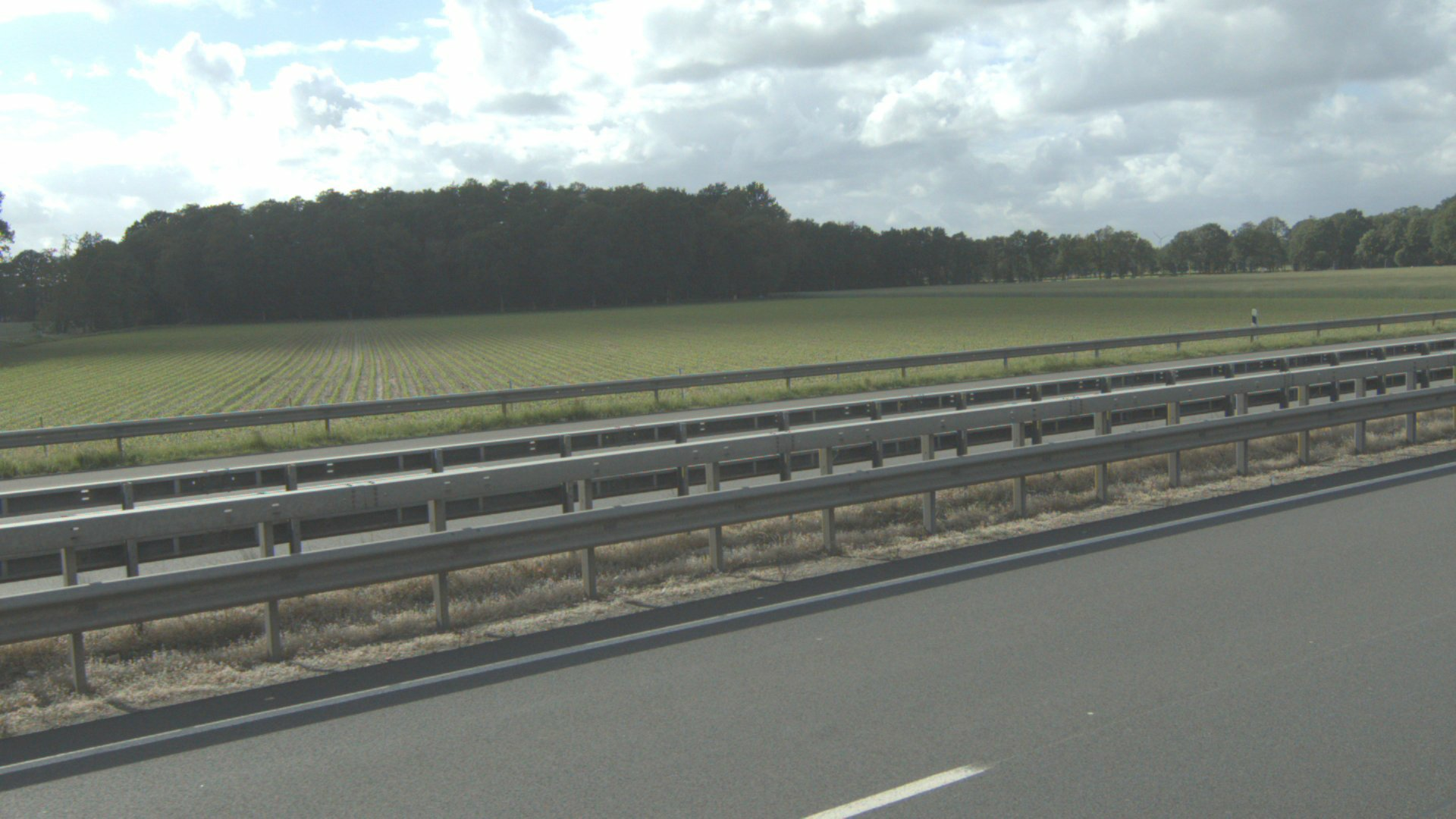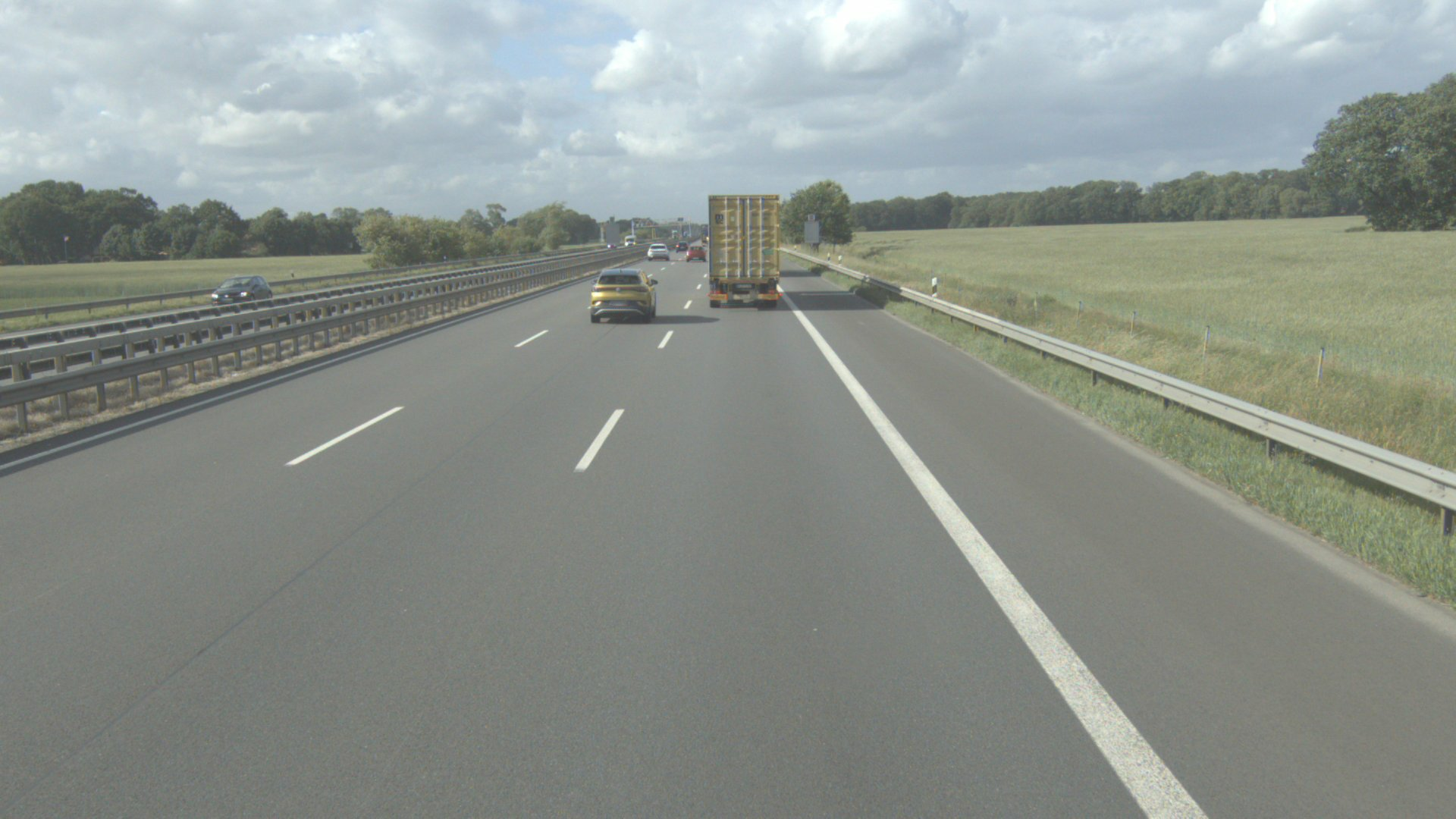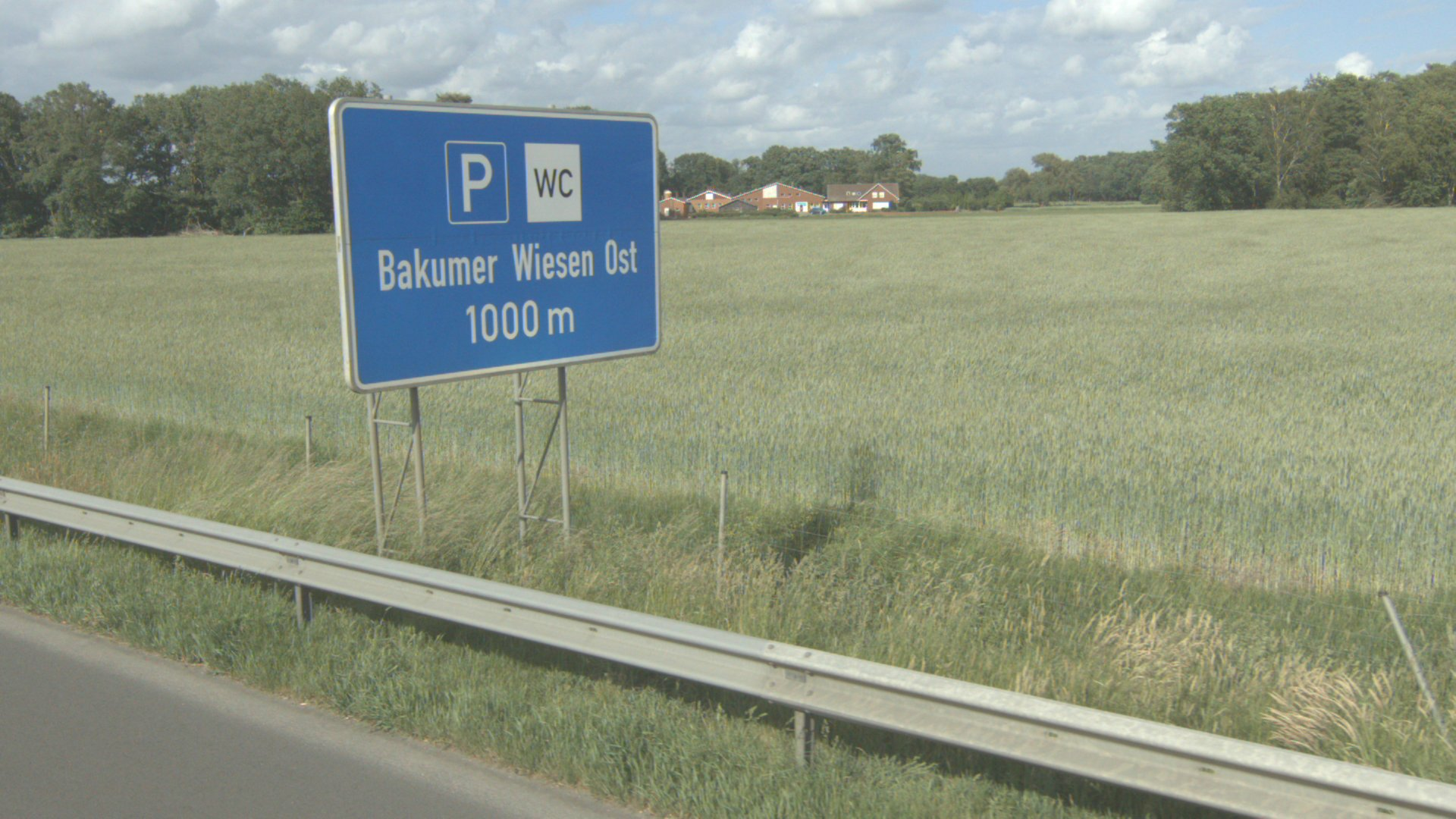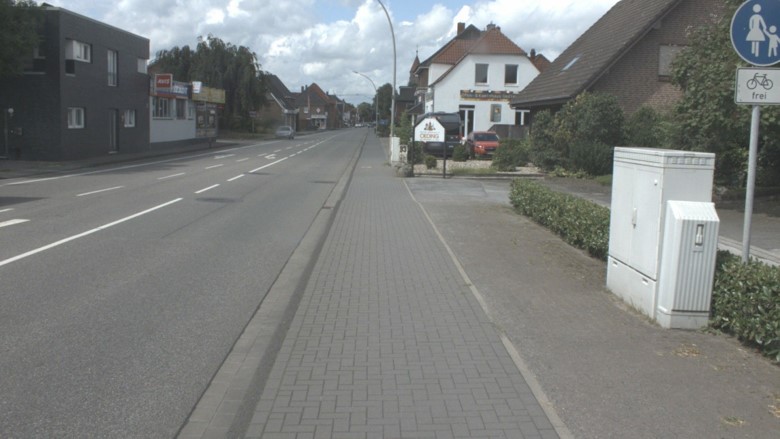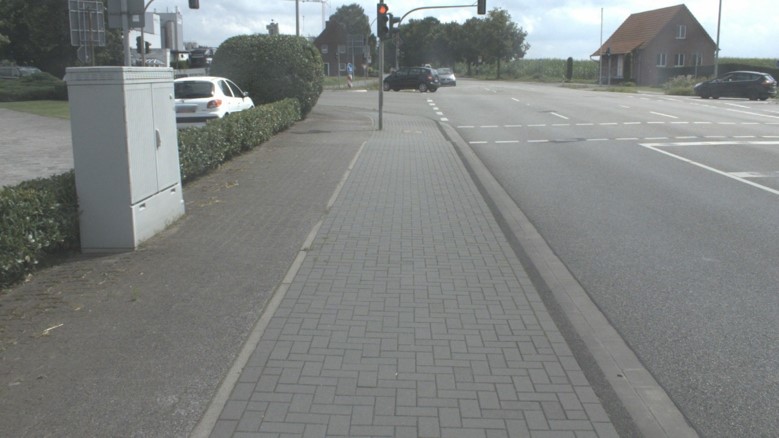Recording of roadway images
As part of the condition monitoring on roads, the ARGUS® measurement vehicle records images by means of a high-resolution front camera as standard. These recordings can be supplemented by a left and / or right-side camera, resulting in a panoramic recording with a viewing angle of around 170°.
In addition, images can be captured via the rear camera, which provide a view of the rear situation in the road space. Roadway images are used for the evaluation of condition data as well as for the evaluation of inventory data such as the recording of signage or fixtures. They are also an important aid for situation analysis and virtual driving at the workplace PC.
Due to the selected optics and exposure times, the images can be captured up to a speed of 100 km/h without motion blur. It is also possible to take measurements in the images, which makes it possible, for example, to determine the width of the lanes or the cycle path. All image data are precisely synchronised with each other and are delivered in a selectable recording grid (5 or 10m as standard) or as video. Position information, among other things, is stored in the header of the individual images for locating the images.
The recording of the route images is carried out in accordance with the requirements of the German Data Protection Regulation (DSGVO). This also includes the anonymisation of the image material by making faces and licence plates unrecognisable. The entire person or the entire vehicle is not pixelated, which means that the unrestricted usability of the image material is maintained, especially in the municipal environment.
As part of the condition monitoring on cycle paths, the ARGUS®-Agil measurement vehicle captures images of the route using a high-resolution front camera and rear camera. These images also do not show any motion blur and it is also possible to measure in the images.
As with the recordings of the ARGUS® measurement vehicle, the rear camera recordings are synchronised with the front camera recordings via an offset in the view. This enables the view of an object, for example, from two views offset by 180° in one set of images.

